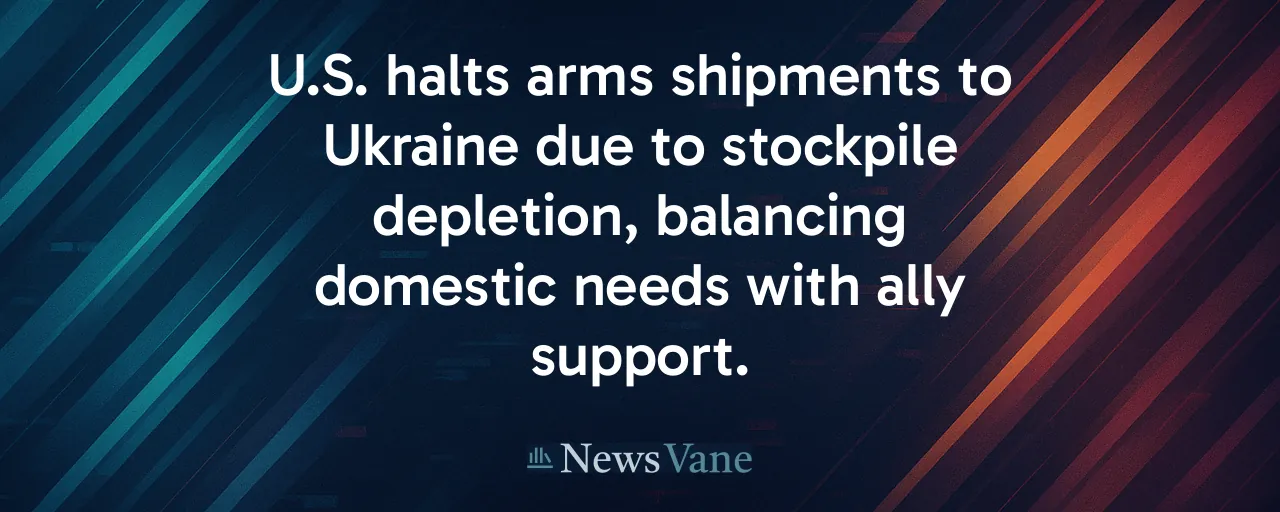A Sudden Freeze on Vital Support
News broke this week that the United States has paused weapons deliveries to Ukraine, halting shipments of air defense interceptors, artillery shells, and precision missiles. The decision, announced on July 2, 2025, affects critical supplies like Patriot missiles and rockets, which Ukraine relies on to shield its cities from Russia's intensifying attacks. Staged in Poland, these munitions were ready to move but now await a Pentagon review prioritizing domestic needs.
This pause arrives at a tense moment. Ukraine faces near-daily Russian drone and missile strikes, with over 4,750 aerial targets downed in June alone. The halt raises questions about how nations balance their own security with commitments to allies. It also prompts a deeper look at how global partnerships can sustain support without overextending any single country's resources.
The issue has ripple effects on civilians, allies, and global stability. With the U.S. supplying $67 billion in arms since 2022, the pause underscores a need for clear, cooperative strategies to ensure both Ukraine's defense and America's readiness remain intact.
Why the Pause Matters
The Pentagon's decision stems from a review of U.S. stockpiles, which have dwindled after three years of heavy transfers. Over 3 million 155 mm artillery rounds and hundreds of Patriot missiles have already been sent to Ukraine. Production can't keep up; Patriot missiles take 24 to 30 months to build, and Ukraine's monthly artillery use outpaces current U.S. output. The Defense Department argues that protecting national reserves is essential, especially with potential conflicts looming elsewhere, like the Indo-Pacific.
Ukraine, however, faces immediate threats. Without Patriot interceptors, cities like Kyiv are more vulnerable to Russian ballistic missiles. Past aid gaps in early 2025 coincided with Russian battlefield gains, raising fears that this pause could weaken Ukraine's defenses further. The stakes are high for both sides: U.S. security and Ukrainian survival.
Beyond the battlefield, the pause tests alliances. European partners, already stepping up with new artillery production, may need to fill gaps quickly. This moment highlights the importance of shared responsibility among allies to maintain a united front.
Learning From the Past
U.S. aid to Ukraine has faced previous snags. In 2019, a brief freeze on assistance sparked intense domestic debate and legal scrutiny, as Congress had already approved the funds. Since 2017, when lethal aid like Javelin missiles began flowing, the U.S. has grappled with balancing support for Ukraine against other priorities. The current pause echoes these tensions but comes with new urgency due to Russia's escalated attacks.
Historical patterns show that abrupt halts can disrupt trust. When aid slowed earlier this year, Ukraine struggled to hold key fronts. Overextending resources also carries risks. Research from RAND and CSIS warns that U.S. stockpiles could falter in a high-intensity conflict, underscoring the need for careful planning.
A Cooperative Path Ahead
Addressing this challenge requires transparency and collaboration. One option is for the U.S. to resume limited shipments once production hits specific targets, like the planned 100,000 artillery rounds per month by late 2025. Meanwhile, European allies could supply interceptors under expedited agreements, easing pressure on U.S. reserves. Joint production lines with Ukraine for shells and drones could also boost long-term capacity.
Clear timelines are critical. Experts suggest automatic triggers tied to stockpile health to avoid sudden, opaque pauses. Such measures would signal reliability to Ukraine while reassuring U.S. taxpayers that their security isn't compromised. Cooperation extends to industry, too, where workforce and supply chain issues require addressing to meet demand.
The broader goal is sustainability. By sharing burdens, allies can ensure Ukraine's defense without any single nation bearing the full cost. This approach strengthens global partnerships and deters aggression more effectively.
Weighing the Bigger Picture
The pause in U.S. arms to Ukraine reflects a delicate balance between immediate humanitarian needs and long-term national strength. Both Ukraine's fight against Russian aggression and America's readiness for future challenges deserve attention. Transparent, cooperative solutions can address both priorities, ensuring aid flows without undermining security at home.
Allies play a pivotal role. As Europe ramps up production and considers backfilling supplies, the pressure on any one nation lessens. This moment tests whether global partnerships can adapt to shared threats while respecting each country's limits.
Ultimately, the path forward lies in clear communication and collective effort. By aligning production, policy, and diplomacy, the U.S. and its allies can support Ukraine's defense, maintain their own strength, and send a unified message to adversaries. The challenge is complex, but history shows that thoughtful coordination can turn tension into opportunity.
